How I reorganized my kitchen in a morning — discover my 9 quick and easy tips
Gain the benefits of a functional kitchen
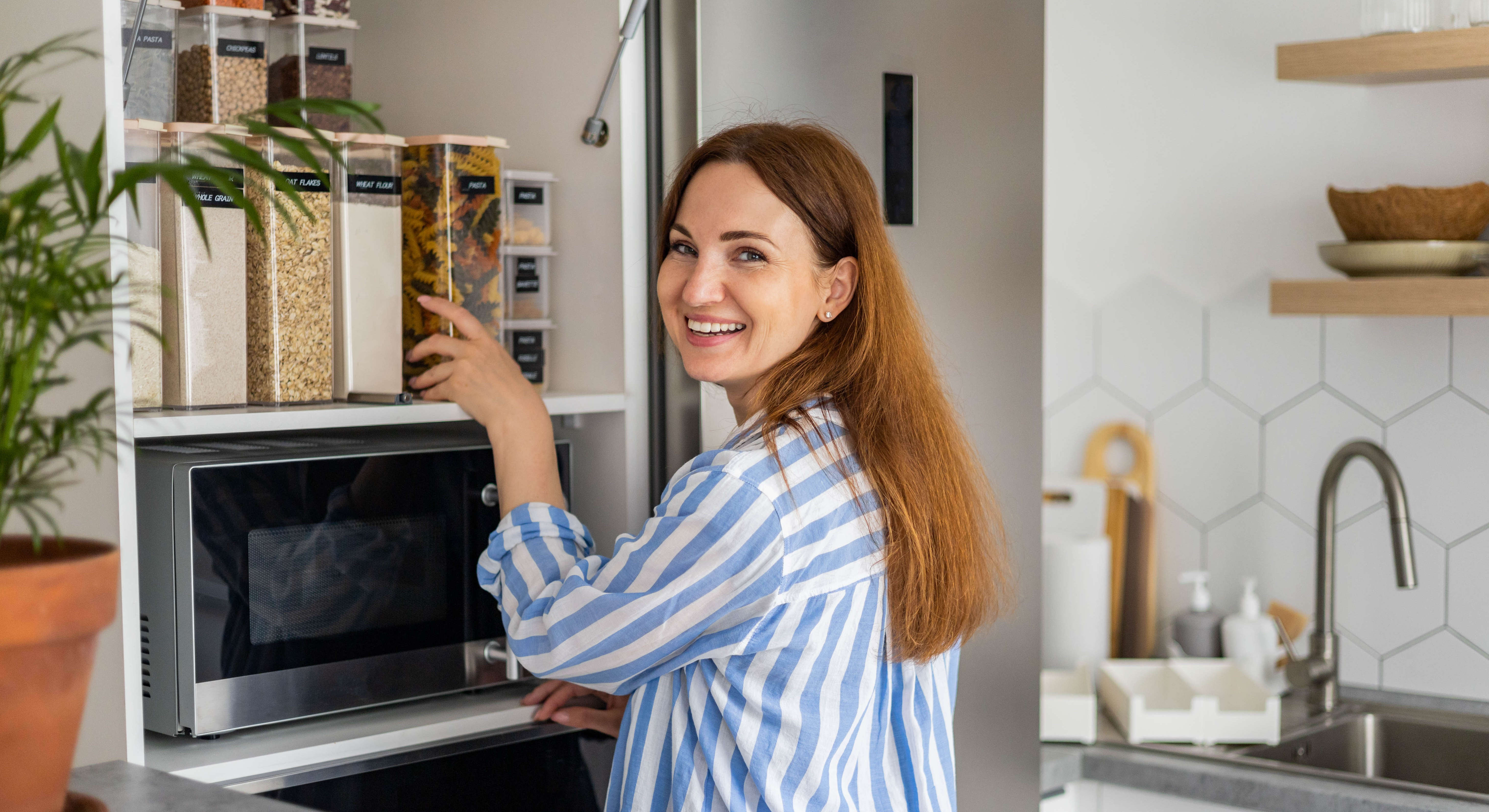
The kitchen is the busiest room in the home and is a functional space where everything should have a place and be easy to find and tidy away. But time gets the better of us, and it can be enough to give it a clean, besides scheduling in a declutter to reorganize your cupboards.
My kitchen was crying out for some care and attention. Whenever I went to find a baking sheet, I’d pull out one, and a whole cascade of clattering tins would follow, accompanied by a few expletives. And when it came to finding an exact spice for a dish, I’d be ploughing through a whole pot of spices that were out-of-date.
It was time to bite the bullet and put aside a morning to reorganize and declutter my kitchen cabinets. Here, I’ve put together my 9 top tips on how to declutter and achieve a functional kitchen that doesn’t drive you to distraction.
1. Give yourself the space to work

I started my morning task by clearing my countertops and placing all my appliances and general kitchen paraphernalia in another room. This cleared the decks and allowed me to use the countertops to pull everything out of the cupboards without the entirety being crammed into a tight space.
2. Clean the slate

Once you’ve removed every item from your cupboards — you may need to do this cupboard by cupboard depending on your space — give them a good clean. It’s much easier to wipe over your cupboards when they are empty rather than trying to navigate around items. And then when you refill your cupboards, you’ll know that they are pristine.
While some of my cupboards weren’t too bad, those with bottles tended to have more sticky spillages and needed a deeper clean. I found wiping them over with hot water and dish soap was sufficient, but you could try a 50/50 split of vinegar and warm water.
3. Go through one section at a time
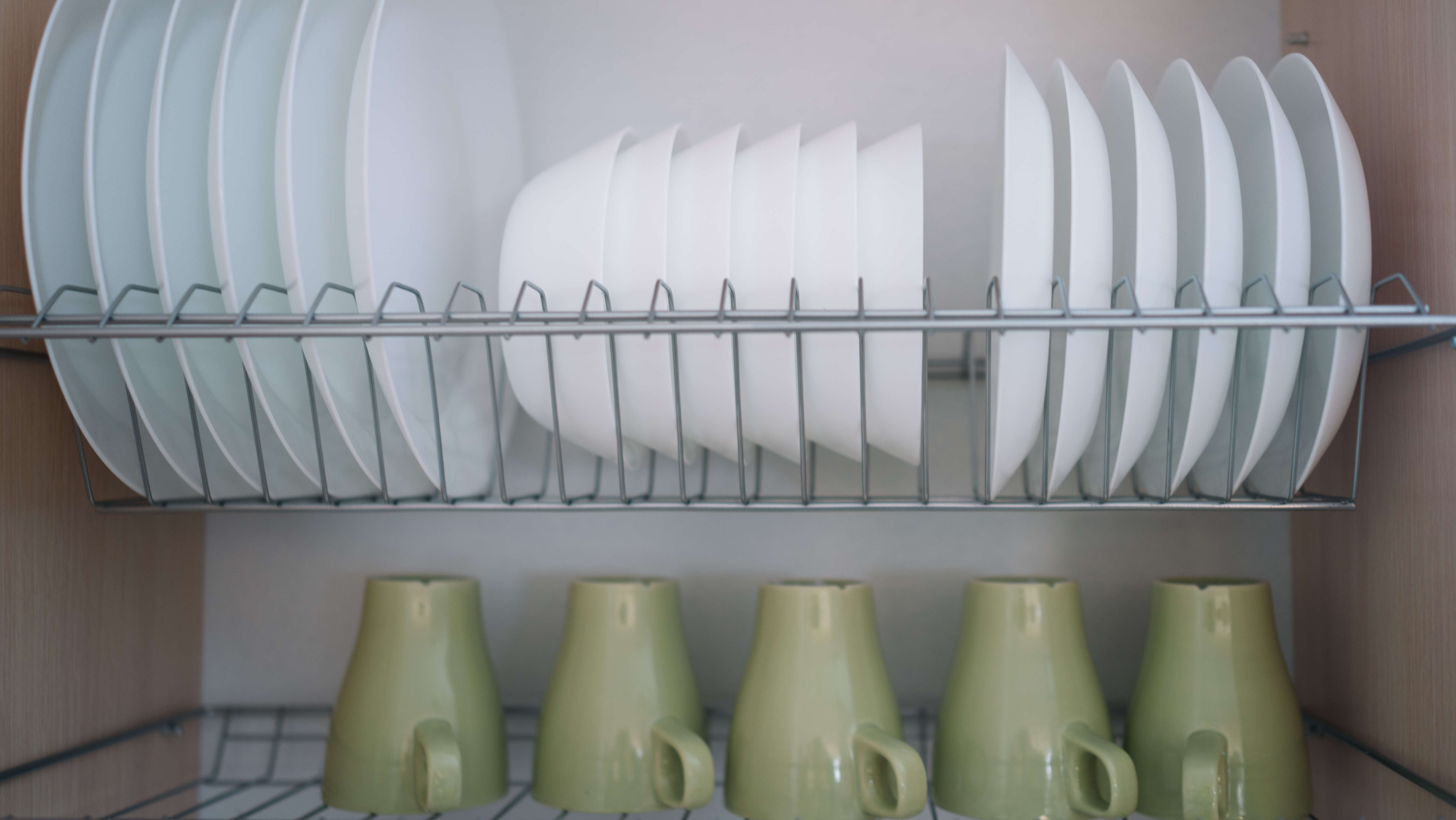
I found it easier to work through one section at a time, keeping my mind focused on one task rather than pulling out everything and feeling overwhelmed. When faced with food, crockery, storage and appliances, you have no central focal point, and it’s harder to work out what to do. Although we are all used to multitasking, we work better when concentrating on one thing.
Get instant access to breaking news, the hottest reviews, great deals and helpful tips.
4. Check the dates on food items
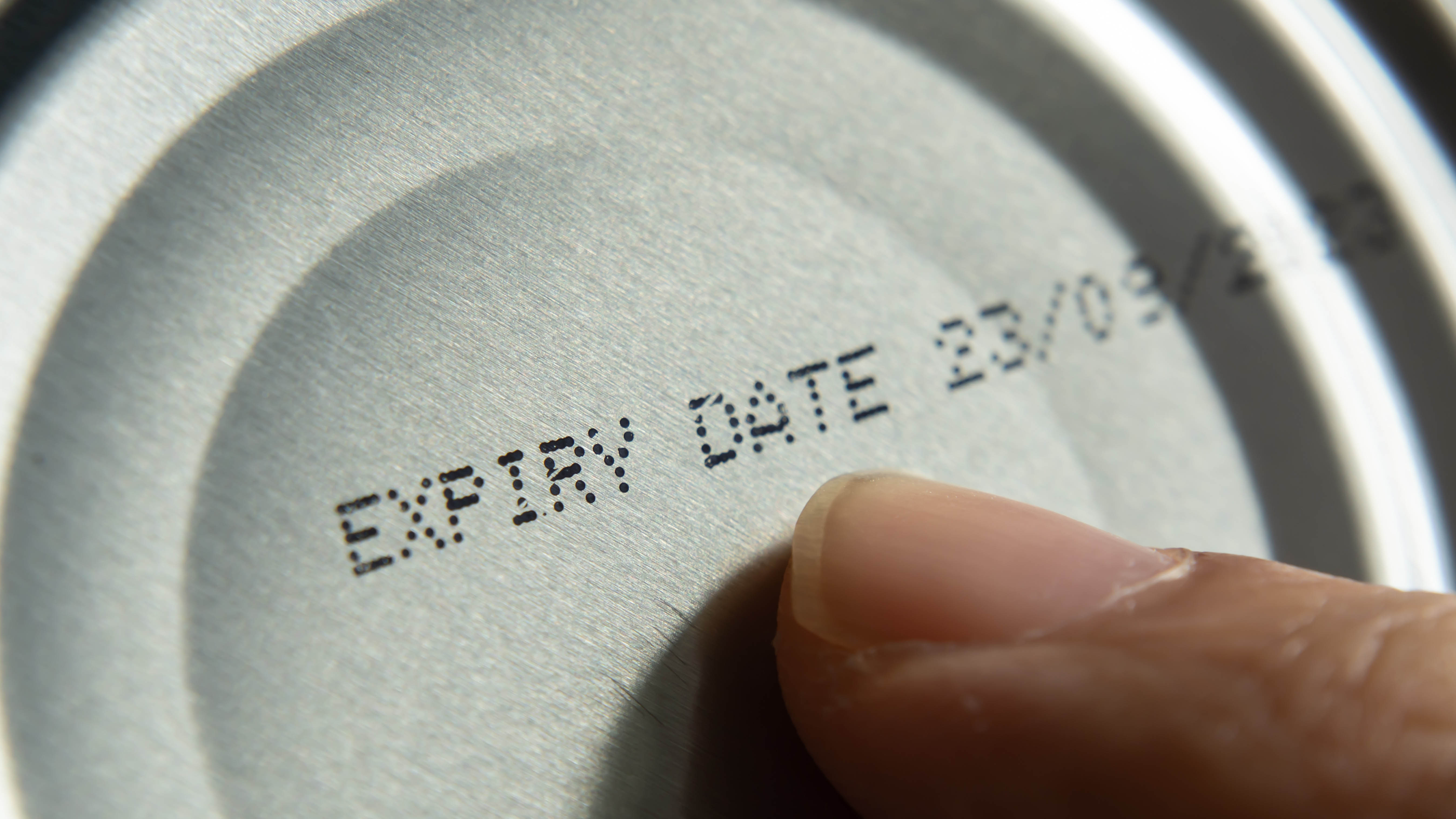
Before reorganizing my food items, the first thing I did was to check through best-before dates. If you tend to stockpile items, you may find that they don’t always get opened before they expire. This wasn’t a particular issue for me, as I don’t have a huge amount of storage space, so I’m not tempted to hoard items when they are discounted. However, I did find that there were a few undesirables in my herb and spice collection.
Although I regularly use herbs and spices in my food preparation, I had purchased a few for specific recipes that had never been used again and were past their best. This takes me back to when I made a curry many years ago with my landlady’s spices, only to discover too late that the spices were out of date and the dish tasted like cardboard.
The U.S. Department of Agriculture says that canned goods will last for years as long as the can is in good condition without rust, dents, or swelling. Packaged foods, such as cereal, cookies and pasta, will be safe past the ‘best buy date’ although they may become stale. Your best plan is to check items that you don’t use regularly. You may be an occasional baker and have a few different packets of flour in your cupboards. If this is the case, it’s worth checking if the items are still OK to consume.
Extra tip
If you plan on cooking a particular recipe with a herb or spice you rarely use, can you substitute it for an alternative already in your cupboard? Besides saving you the expense of buying a herb or spice that you may only use once, it will cut down on extra items in your cupboards.
5. Group similar items together
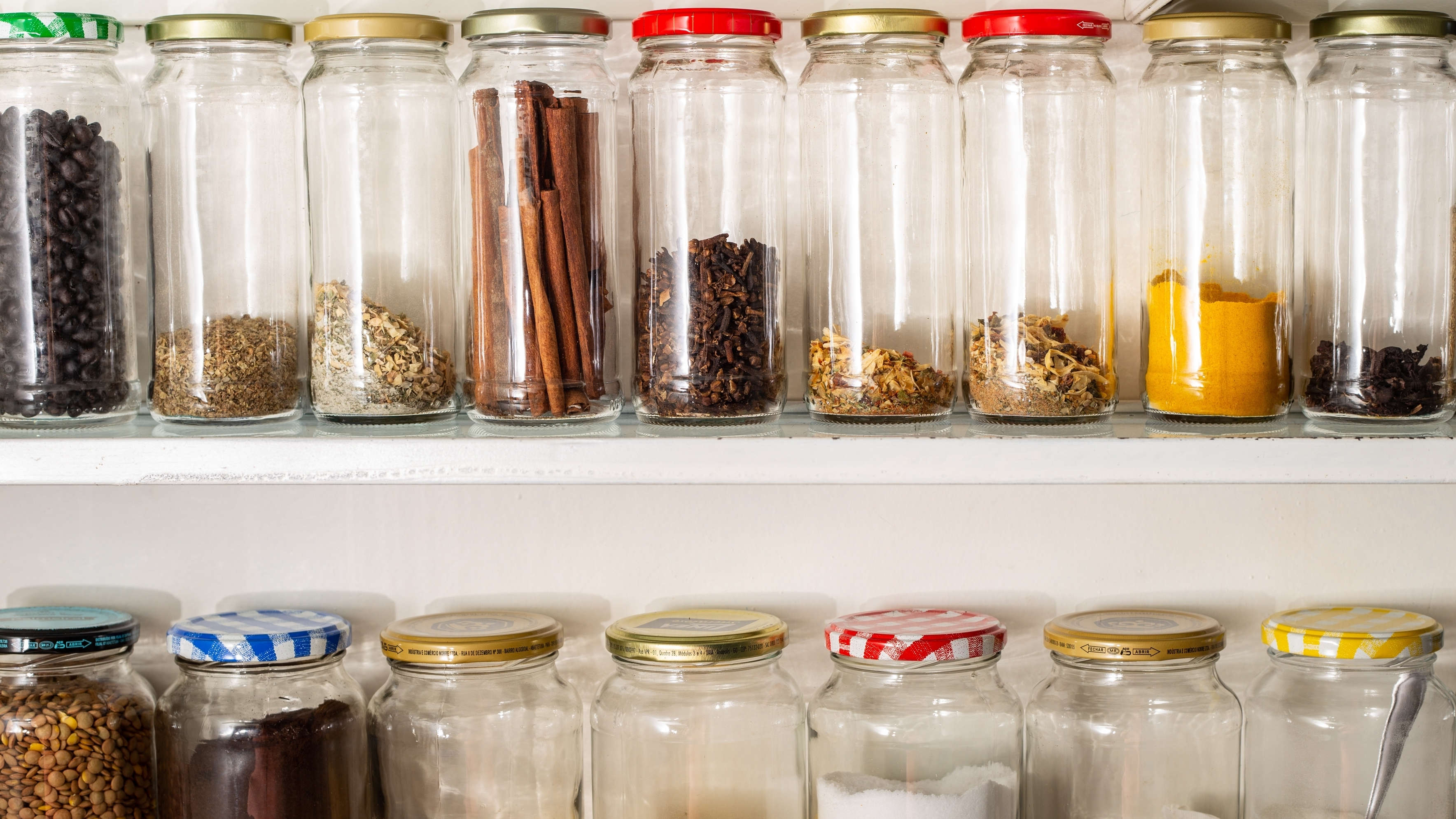
The sensible way to organize your cupboards is to group similar items together, so when you’re looking to bake a cake, everything you need is within the same zone. It also helps if food items are close to your cooking appliance so that you do not have to move to the other end of your kitchen when you need an item.
I have three food cupboards in my kitchen; two are wall cabinets, which are either side of my oven, and one full-length cupboard. I reorganized my items so that beverages, spreads, and baking ingredients are in the cupboard above my kettle and toaster. I then placed sauces, tinned items, dried rice, and pasta in the other. In my tall cupboard, I placed herbs and spices and dried fruit and nuts on one shelf, cereal on another, and cookies and snacks on the third shelf. And for good measure, the alcohol is on the bottom shelf.
This area also works as a kitchen triangle with my fridge and kitchen sink on the opposite side of my galley kitchen, so everything is within easy reach.
6. Be brutal
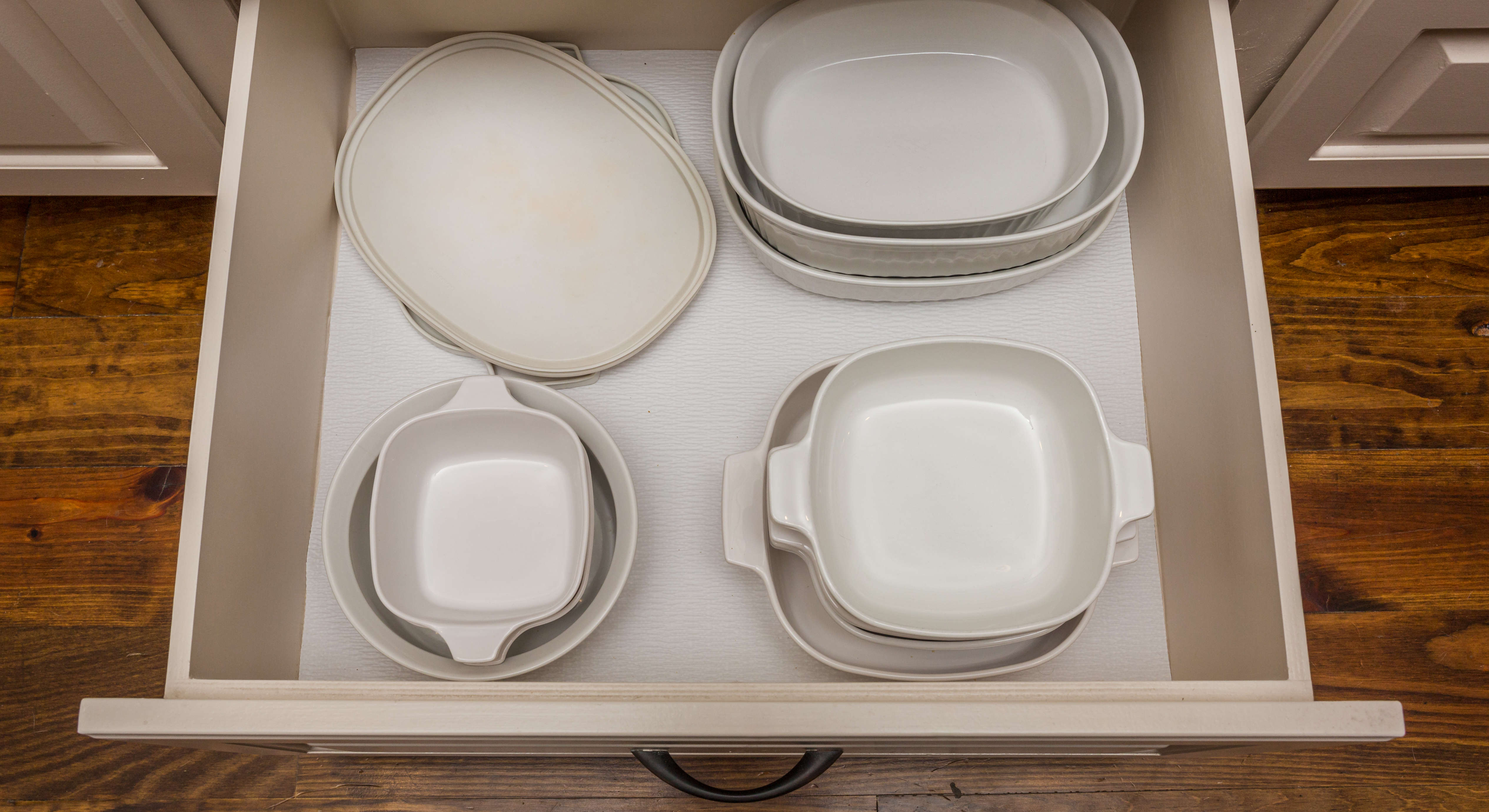
Sorting out food is one thing, as it’s not difficult to discard expired items, but decluttering and reorganizing your utensils, cookware, and appliances can be more tricky. Some items can be difficult to part with, and even though you rarely use them, they can have sentimental value.
I found this when decluttering my cookware. There were certain items that I’d been given as wedding gifts over 25 years ago, which I found difficult to part with. However, I took hold of them and asked myself when I last used them. I knew I wouldn’t use them again if they hadn't come out the cupboard in the last six months. So, out went a few baking dishes and a casserole pot!
You may find my six-month rule harsh, so you could always up this to one year. Although, I’m confident the outcome will be the same.
Another option is to smarten up your crockery to make it look like new rather than throwing it out, and there's a simple cleaning hack that works wonders.
7. Don’t double-up

My metal baking trays and cake tins were a constant cause of strife in my kitchen. Piled up on top of each other in a higgledy-piggledy mess, I could never find what I needed. The problem was only ever going to be solved by finding more space or getting rid of half of them. And finding more space wasn’t an option. So, I worked through and kept all the basics and put anything that was doubled up to one side. The result is a much more organized cupboard with a rack organizer on order. Everything will be stored vertically rather than horizontally, making it easier for one item to be removed, without the whole contents tumbling out. For something similar, you could try this mDesign Pot Lid and Pan Rack ($25, Amazon).
Having too many of any particular item is a common hazard in a kitchen. Mugs are a classic example. Often given as presents or freebies, your mug cupboard can soon resemble a mismatched collection of clashing cups. Work out how many mugs you need daily, then keep your favorites and ditch the rest. I was pleased to discard a football mug or two (with permission from the owner).
I also had multiple mixing bowls of the same size and decided to keep a small, medium and large bowl, as I know I don’t need anything else.
8. Declutter your kitchen appliances
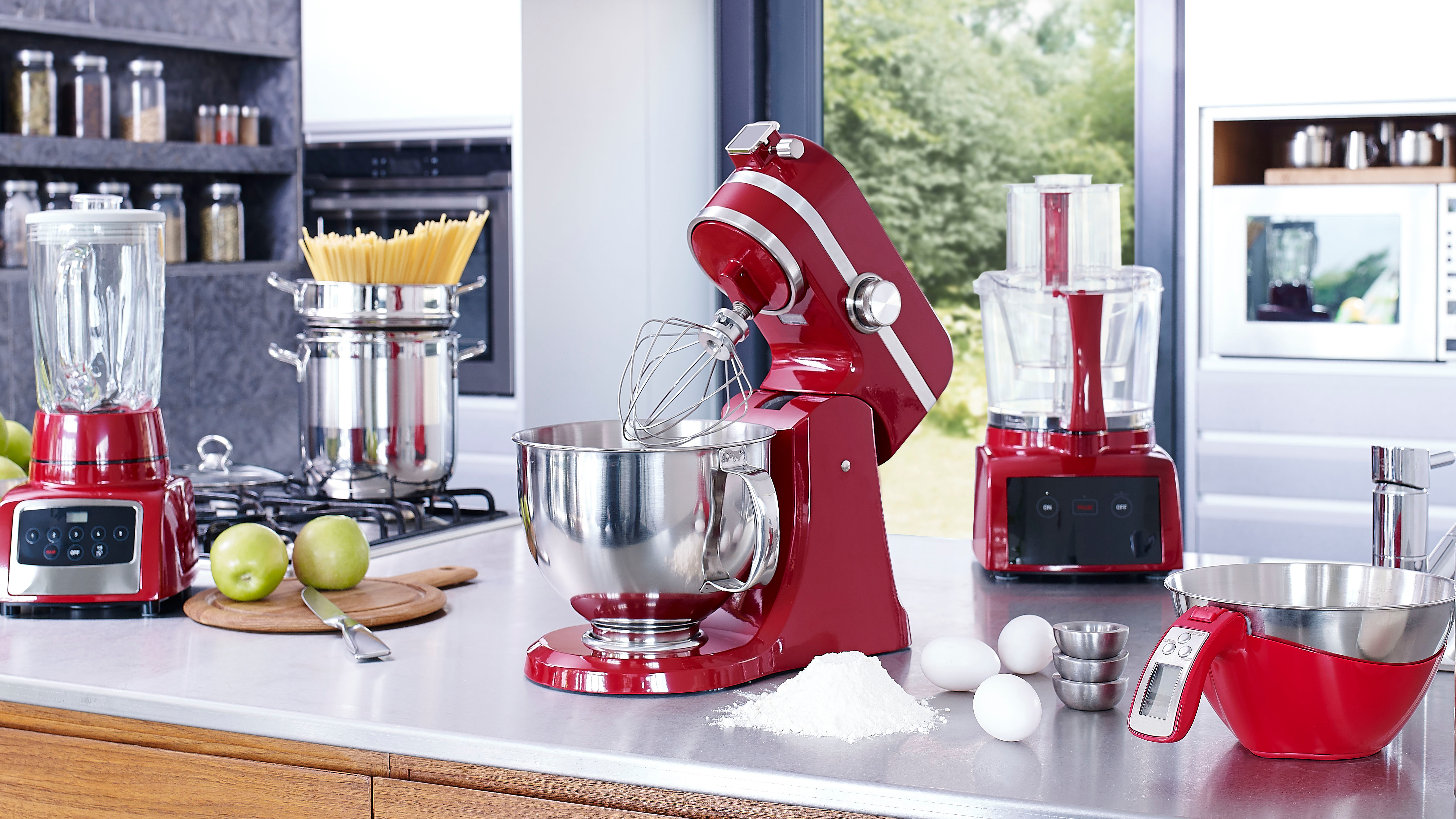
Kitchen appliances can take up a great deal of space in your cupboards and countertops, with many stored away in cupboards when not in use. But just like my advice on deciding what bakeware to keep, I’d suggest asking yourself when you last used the appliance. And if you get to the point that you’ve forgotten you owned it, it’s a sure sign that it’s time to sell or donate it.
During my morning cull, I discovered a rice cooker and an ice cream maker that had been bought as a fancy but hardly used. Although I like homemade ice cream, the appliance was a little small to make a decent family-sized amount, so it was rarely used. I also didn’t get on with using the rice cooker, and combined with its large size, I decided to put it in the donate pile.
9. Let storage containers be your friend

I’m a fan of storage boxes to keep everything contained in the kitchen. For instance, I place all my spreads in a box and remove them from the cupboard when I need something. I do the same for my baking ingredients, making everything readily accessible without scouting through to the back of a cupboard to find what I need.
But apart from using storage boxes to tidy food items, I find them particularly handy to house small appliances and their attachments. It keeps everything in one place, making it easier for me to find the whisk or beater to my KitchenAid stand mixer when I need it.
Although I haven’t quite got to storing all dried goods in jars, I have ordered a few cereal containers, so I’m on the way to having a very organized kitchen. It’s surprising how quickly your cupboards can get tidier when there’s not so much in them.
Now that you know how to get your kitchen in order, you might be interested in reading 5 ways to make your kitchen look expensive.
More from Tom's Guide
- Discover 7 spaces saving hacks to organize your kitchen cabinets
- And 7 kitchen storage mistakes you are making right now
- Plus, 7 ways to double the space in a small kitchen

Camilla is the Homes Staff Writer and covers everything to do with homes and gardens. She has a wealth of editorial experience, mounting over 30 years, and covers news and features, tests products for reviews and compiles buying guides.
Her work has appeared in business and consumer titles, including Ideal Home, Real Homes, House Beautiful, Homebuilding & Renovation, and Kitchen & Bathroom Business. She’s even appeared on the cover of Your Home, writing about her own house renovation.
Although she’s obsessed with decorating her home, she also enjoys baking and trying out the latest kitchen appliances. But when she’s not inside, you’ll find her pottering about in her yard, tending to her vegetable patch or taking in her prized hydrangeas.
